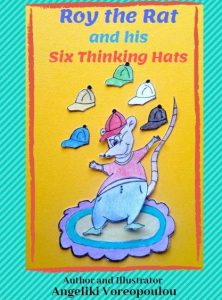 Roy the Rat has six thinking hats that he use whenever he wants to enter the process of making a decision. These hats help him approach situations carefully, by judging from different angles, and assist to avoid making hasty decisions or mistakes. This is a great technique that children can learn to apply in day to day life. The story is based on De Bono’s Six Thinking Hats technique.
Roy the Rat has six thinking hats that he use whenever he wants to enter the process of making a decision. These hats help him approach situations carefully, by judging from different angles, and assist to avoid making hasty decisions or mistakes. This is a great technique that children can learn to apply in day to day life. The story is based on De Bono’s Six Thinking Hats technique.
In this story each hat has a different approach or outlook on things, the yellow hat makes Toy be more optimistic, the green hat makes Roy become more of a planner and think out of the box, the blue hat makes him more organized and so on.
Author and Illustrator: Angeliki Voreopoulou
Sample Text and Images from Roy The Rat and his Six Thinking Hats
Roy is a rat.
Not an ordinary rat but a clever one!
He has 6 different thinking hats to help him
solve all his problems.
You see life is dangerous where he lives
because there is Blackie the cat…
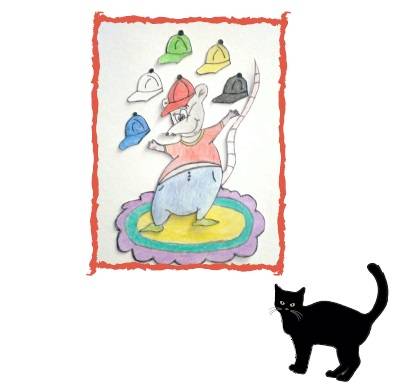
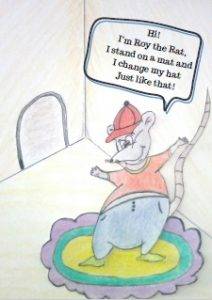 One day while he was wandering in the
One day while he was wandering in the
kitchen, he saw a box on the kitchen table.
It was a beautiful big red box.
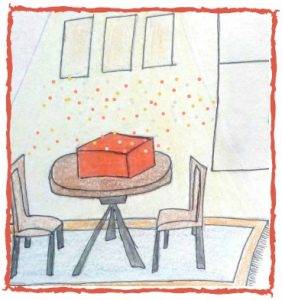 Roy’s eyes sparkled with excitement!
Roy’s eyes sparkled with excitement!
‘I want that box’ he thought and then
he said:
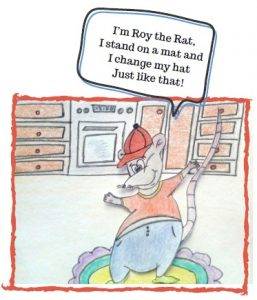
Roy put on his WHITE HAT
and started thinking.
‘What do I know about the box? Well
not much… So I need to collect
information about it.
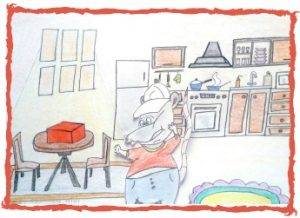 I could ask Tina the canary or Fenia the fly.
I could ask Tina the canary or Fenia the fly.
Blackie could know something about it
because he is always around here but I’d
better not go near him.
<end of sample text from Roy the Rat and his Six Thinking Hats>
To keep reading, select download pdf or read online for viewing the fipbook of the full version of Roy the Rat and his Six Thinking Hats on the buttons below the post.
The Six Thinking Hats
De Bono’s Six Thinking Hats is a powerful decision making technique suitable for both group discussions and individual thinking. A thinking hat is a metaphor for a specific way of thinking, which allows people to look at the effects of a decision from different perspectives.
The Six Thinking Hats technique can be easily used in education to help students approach situations from different angles and therefore avoid a one-sided way of thinking. It can also promote their creativity, problem solving and critical thinking while providing them with opportunities to sharpen their communication skills as they will have to share opinions, ideas and feelings.
Since each thinking style is represented with a different colour, learners can easily recognize the thinking skill they are using just by visualizing it. The different colour hats and the thinking style they represent along with some questions and useful language that might facilitate the thinking process are briefly presented on the table below:
| Hat | Function of Hat | Question to answer | Useful language |
|---|---|---|---|
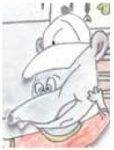 |
Objective Facts & Figures The Information known or needed | What information/facts do we know? what information is missing?
What information facts would we like to have? How are we going to get the information?
|
We know that…
Let’s see what we have already learned… what information we have so far… |
 |
Express emotions & feelings, hunches, intuitions.
Share fears, likes dislikes, love and hates. |
How do I feel about this right now?
How am I reacting to this? |
I feel…
For me… |
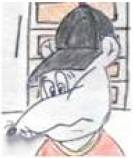 |
Be the devil’s advocate Cautious and Careful Focus on difficulties and dangers.
Identify the Worst-case Scenarios |
Is this true? Will it work? Why it wont work?
What are the weaknesses? What is wrong with it? |
I don’t think that…
I wouldn’t do… |
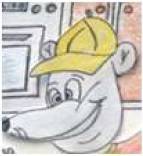 |
Be optimistic and maintain a positive attitude
Explore the benefits and best-case scenarios |
What are the good points? What are the benefits?
Why will this idea work? Why is this worth doing? How will it help us? Why can it be done? |
We can…
We should… |
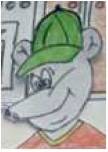 |
Creativity, generate new ideas / concepts / perceptions on
how the case can be handled |
What are some possible ways to work this out?
What are some other ways to solve the problem? |
I believe that…
I think that… We could try… |
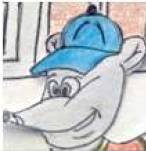 |
Control, organization and management of the thinking process | What do we want to achieve?
Where do we want to end up? |
We should continue by… |
See more books from Angeliki Voreopoulou:
 The BIG Red Balloon! – Rhyming Picture Book
The BIG Red Balloon! – Rhyming Picture Book
The BIG Red Balloon Have you seen the BIG red balloon? Oh NO! Where could it be? Where is the beautiful big red balloon? This book is perfect for young readers to improve their vocabulary and familiarize new words. The book provides a rhyming repetition of sentences then add a new word as the sentence is being repeated. It also introduces flowers, animals, and places along with a picture so young readers may understand and grasp what is being said on the book.
The book has amazing and wonderful picture to keep your little ones interest on the book while slowly providing them words that they can be familiar with.
See more books about Behaviour below
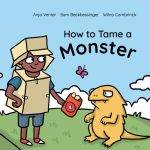 How to Tame a Monster - Lwando’s sister Oyiso is sometimes very cute, but sometimes she is a monster! Can Lwando tame the monster? Find out in this beautifully illustrated book from BookDash. Sample Page from How to Tame a Monster <End of Page 2 of 24> Download or read online the full free children’s ebook by selecting one of the ...
How to Tame a Monster - Lwando’s sister Oyiso is sometimes very cute, but sometimes she is a monster! Can Lwando tame the monster? Find out in this beautifully illustrated book from BookDash. Sample Page from How to Tame a Monster <End of Page 2 of 24> Download or read online the full free children’s ebook by selecting one of the ...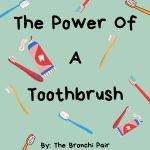

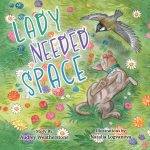






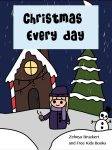





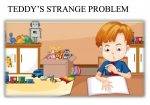



See more books released under Creative Commons below


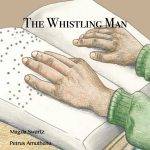




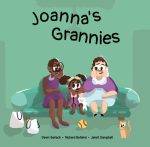

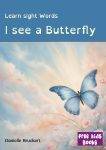

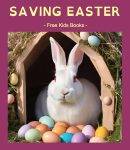

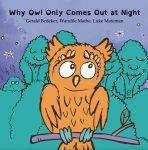




Sponsored Links:
Note – if you sign up through these links, it doesn’t cost you any extra, but FKB receives a small donation, which helps us move towards our aim of
FREE Hardcopies!
All our posts are checked by Grammarly, the FREE online grammar checker (We still receive a donation even if you only sign up for the free account :-):


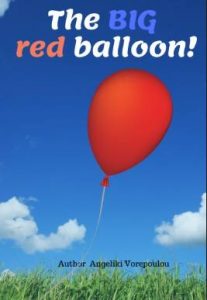
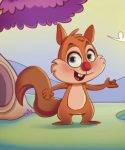
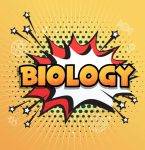

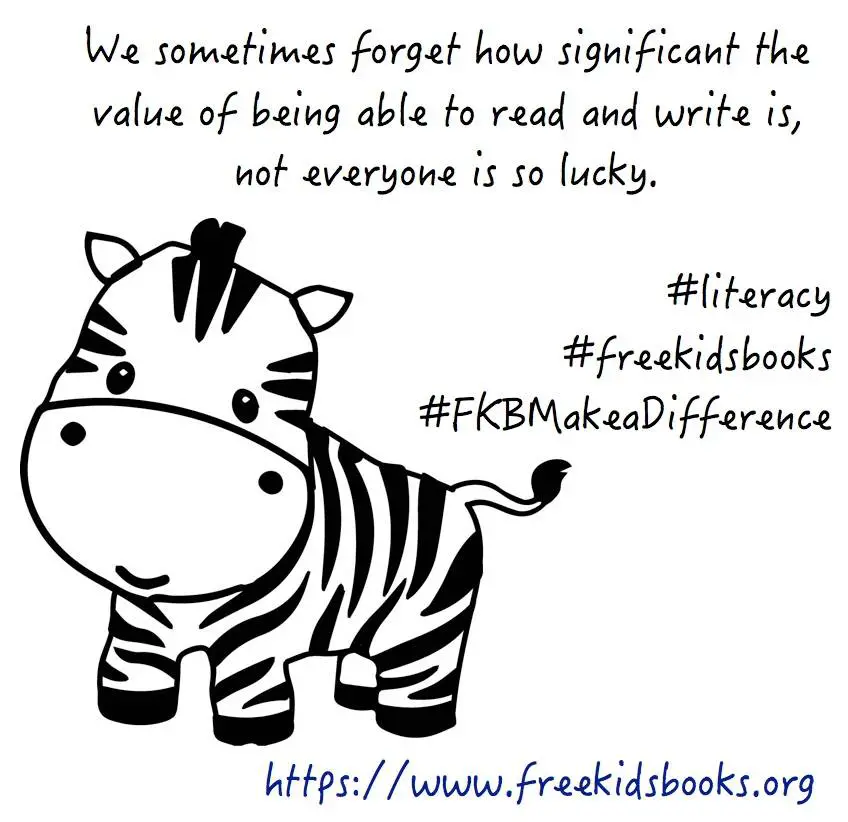










Nice
Yes,a lot thanks a lot
So glad to hear you enjoyed it
yes I liked it
its good and easy for my sister to read